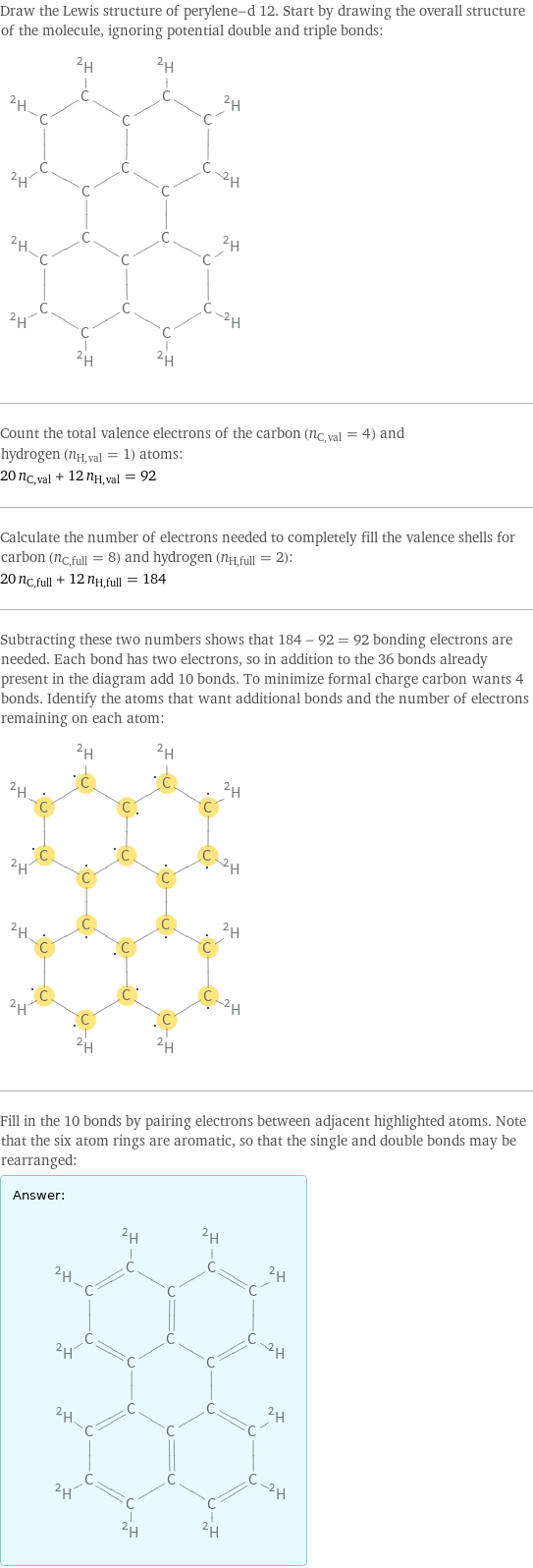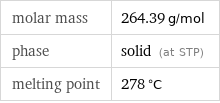Input interpretation

perylene-d 12
Chemical names and formulas

formula | C_20D_12 name | perylene-d 12 IUPAC name | 1, 2, 3, 4, 5, 6, 7, 8, 9, 10, 11, 12-dodecadeuterioperylene alternate names | 1, 2, 3, 4, 5, 6, 7, 8, 9, 10, 11, 12-dodecadeuterioperylene mass fractions | C (carbon) 0.909% | H (hydrogen) 0.0914%
Lewis structure

Draw the Lewis structure of perylene-d 12. Start by drawing the overall structure of the molecule, ignoring potential double and triple bonds: Count the total valence electrons of the carbon (n_C, val = 4) and hydrogen (n_H, val = 1) atoms: 20 n_C, val + 12 n_H, val = 92 Calculate the number of electrons needed to completely fill the valence shells for carbon (n_C, full = 8) and hydrogen (n_H, full = 2): 20 n_C, full + 12 n_H, full = 184 Subtracting these two numbers shows that 184 - 92 = 92 bonding electrons are needed. Each bond has two electrons, so in addition to the 36 bonds already present in the diagram add 10 bonds. To minimize formal charge carbon wants 4 bonds. Identify the atoms that want additional bonds and the number of electrons remaining on each atom: Fill in the 10 bonds by pairing electrons between adjacent highlighted atoms. Note that the six atom rings are aromatic, so that the single and double bonds may be rearranged: Answer: | |
Basic properties

molar mass | 264.39 g/mol phase | solid (at STP) melting point | 278 °C
Units

Non-standard atom properties

H-2 | 12
Chemical identifiers

CAS number | 1520-96-3 PubChem CID number | 622045 PubChem SID number | 24872568 SMILES identifier | C1=CC2=C3C(=C1)C4=CC=CC5=C4C(=CC=C5)C3=CC=C2 InChI identifier | InChI=1/C20H12/c1-5-13-6-2-11-17-18-12-4-8-14-7-3-10-16(20(14)18)15(9-1)19(13)17/h1-12H/i1D, 2D, 3D, 4D, 5D, 6D, 7D, 8D, 9D, 10D, 11D, 12D MDL number | MFCD00084161